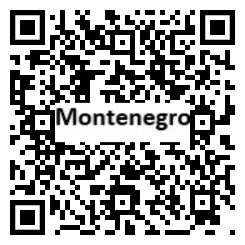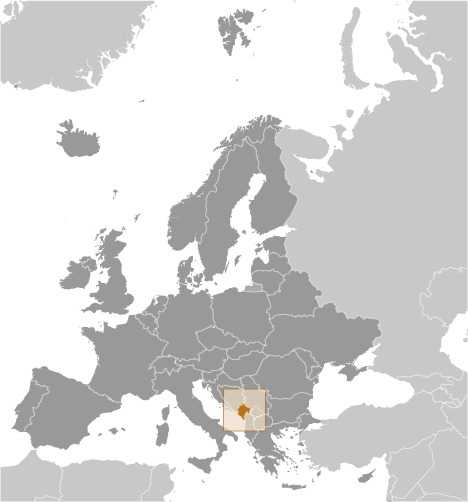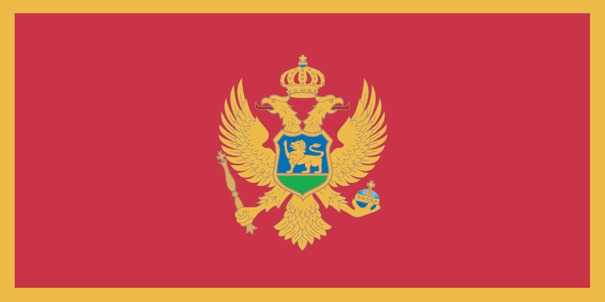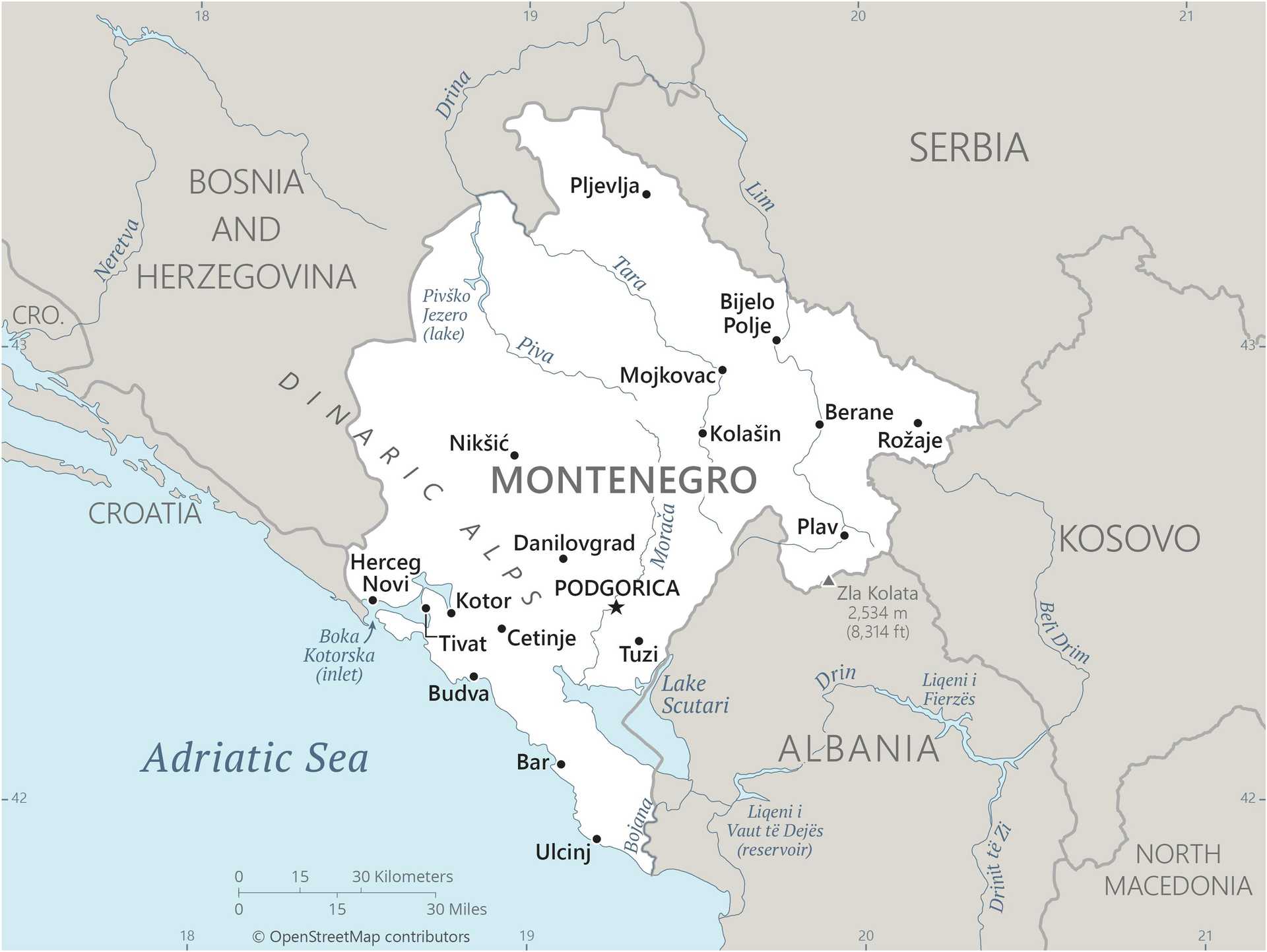Introduction
Background
Under Ottoman control beginning in 1496, Montenegro was ruled by bishop princes until it became a secular principality in 1852. In 1918, Montenegro was absorbed by the Kingdom of Serbs, Croats, and Slovenes, which became Yugoslavia in 1929. When the latter dissolved in 1992, Montenegro first federated with Serbia but voted for independence in 2006. Montenegro became an official EU candidate in 2010 and joined NATO in 2017.
Geography
Area
total : 13,812 sq km
land: 13,452 sq km
water: 360 sq km
Climate
Mediterranean climate, hot dry summers and autumns and relatively cold winters with heavy snowfalls inland
Natural resources
bauxite, hydroelectricity
People and Society
Population
total: 599,849
Ethnic groups
Montenegrin 45%, Serbian 28.7%, Bosniak 8.7%, Albanian 4.9%, Muslim 3.3%, Romani 1%, Croat 1%, other 2.6%, unspecified 4.9% (2011 est.)
Languages
Serbian 42.9%, Montenegrin (official) 37%, Bosnian 5.3%, Albanian 5.3%, Serbo-Croat 2%, other 3.5%, unspecified 4% (2011 est.)
Religions
Orthodox 72.1%, Muslim 19.1%, Catholic 3.4%, atheist 1.2%, other 1.5%, unspecified 2.6% (2011 est.)
Population growth rate
-0.44% (2024 est.)
Government
Government type
parliamentary republic
Capital
name: Podgorica; note - Cetinje retains the status of "Old Royal Capital"
Executive branch
chief of state: President Jakov MILATOVIC (since 20 May 2023)
head of government: Prime Minister Milojko SPAJIC (since 31 October 2023)
Legislative branch
description: unicameral Assembly or Skupstina (81 seats; members directly elected in a single nationwide constituency by proportional representation vote; members serve 4-year terms)
Economy
Economic overview
upper middle-income, small Balkan economy; uses euro as de facto currency; strong growth driven by tourism and consumption; new impetus for EU accession under Europe Now government; influx of affluent migrants from Russia and Ukraine; progress in fiscal position subject to risks from pension costs, debt service, and informal sector
Real GDP (purchasing power parity)
$17.115 billion (2023 est.)
$16.149 billion (2022 est.)
$15.177 billion (2021 est.)
Real GDP per capita
$27,800 (2023 est.)
$26,200 (2022 est.)
$24,500 (2021 est.)
Agricultural products
milk, potatoes, grapes, watermelons, sheep milk, cabbages, oranges, eggs, goat milk, figs (2022)
Industries
steelmaking, aluminum, agricultural processing, consumer goods, tourism
Exports
$3.775 billion (2023 est.)
$3.178 billion (2022 est.)
$2.502 billion (2021 est.)
Exports - partners
South Korea 24%, Serbia 12%, Italy 9%, Switzerland 9%, Bosnia and Herzegovina 7% (2022)
Exports - commodities
copper ore, electricity, aluminum, aluminum ore, packaged medicine (2022)
Imports
$5.163 billion (2023 est.)
$4.614 billion (2022 est.)
$3.637 billion (2021 est.)
Imports - partners
Serbia 24%, China 8%, Italy 8%, Croatia 7%, Greece 7% (2022)
Imports - commodities
electricity, refined petroleum, aluminum, cars, garments (2022)
Exchange rates
euros (EUR) per US dollar -
Page last updated: Wednesday, July 24, 2024




